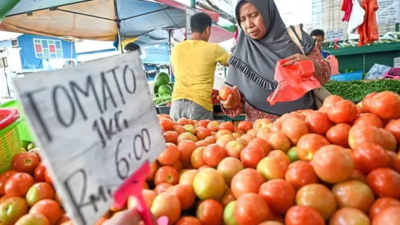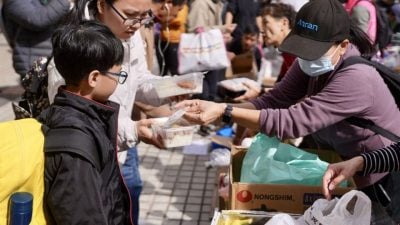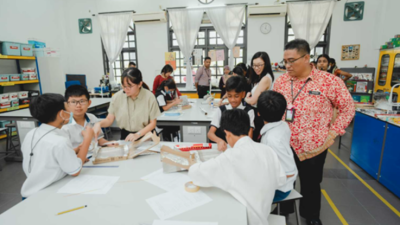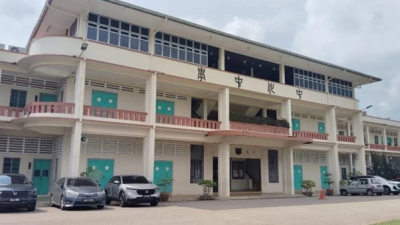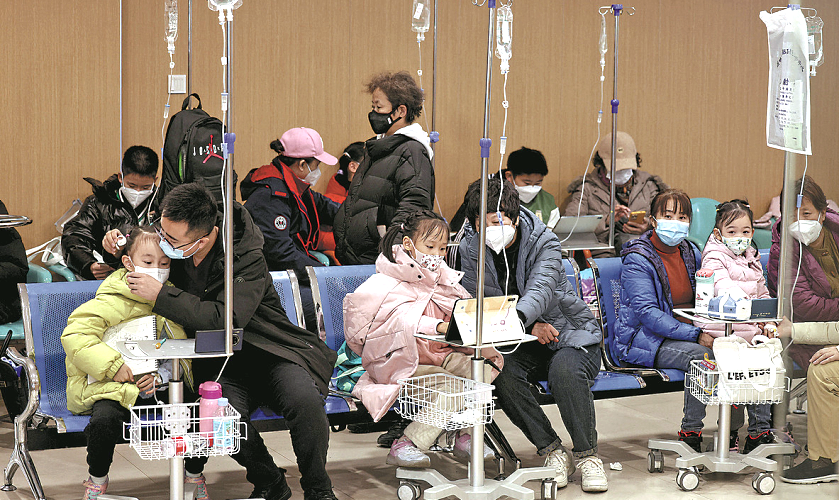
BEIJING: Despite crowded and noisy surroundings, kindergarten pupil Tiantian sat comfortably on a mat on Sunday, watching his favourite cartoon show on his grandmother’s phone in a quiet corner on the second floor at Beijing Children’s Hospital, little suspecting that he would spend the entire afternoon there.
On Friday, the 4-year-old developed a fever, and was given medication to reduce it.
His grandmother, surnamed Sun, said that on Saturday night, Tiantian’s temperature was very high again.
“We thought that he should be checked by a professional paediatrician, and that he might need to be given fluids intravenously,” she added.
At lunchtime on Sunday, a nurse at the hospital said that Tiantian was extremely low down on the waiting list and would not be treated until nightfall, adding that all such patients would be dealt with, no matter how late it was.
“At a special time like this, I guess all we can do is wait patiently and make him feel as comfortable as possible,” Sun said, pointing to a duffle bag of Tiantian’s stuffed toys, two drinking flasks and some cushions and blankets.
Parents in Beijing, Tianjin and a number of other areas have prepared themselves and their children for long waits at hospitals as China experiences rising numbers of respiratory illness cases driven by the overlapping circulation of different pathogens.
Wang Huaqing, chief immunisation planning expert at the Chinese Centre for Disease Control and Prevention, said at a news conference on Sunday that influenza and rhinovirus are now most prevalent among 1- to 4-year-olds, while children in the 5-14 age bracket are now experiencing influenza, mycoplasma pneumonia and adenovirus infections.
The surge in young patients has piled pressure on paediatric facilities striving to optimise procedures, raise staffing levels and arrange resources to meet demand.
Health professionals have advised parents not to become unduly worried during the seasonal outbreaks and to use online medical consultations or community clinics to avoid overcrowding at major hospitals.
Han Tongyan, head of Peking University Third Hospital’s paediatric unit, said that throughout her 20-plus years of practising medicine she has never seen two emergency physicians taking night shifts — from 9 p.m. to 8 a.m. — at the unit at the same time.
However, the current situation calls for extraordinary measures.
“One doctor would have to handle as many as 180 patients during a single night shift, because so many patients are arriving in the evening and after midnight.
“The workload is exhausting, so we decided to arrange two doctors for the shift,” she said.
“From 8 a.m. to 9 p.m., we have also ensured that five doctors are on duty to see outpatients or emergency cases, up from two in normal times.”
Han said the daily number of total outpatient and emergency visits at the facility began rising in the middle of last month, peaked last week and has recently stabilised.
“Compared to the levels seen in 2017 and 2018 before the COVID-19 pandemic hit, the daily volume has doubled, even tripled,” she said.
The two best-known public paediatric hospitals in the Chinese capital — Beijing Children’s Hospital affiliated to Capital Medical University and the Children’s Hospital affiliated to Capital Institute of Paediatrics — have reported a daily volume of 7,000 to 9,000 visits this month, which they said neared or exceeded their full capacity, Beijing Radio and Television Station reported.
Xu Xiaojing, a paediatrician at China-Japan Friendship Hospital, said that last week she received nearly 160 patients during a night shift that lasted from 6 p.m. to 8 a.m.
“There were simply so many kids waiting outside. I only drank water twice and went to the toilet twice throughout the shift, and felt on the verge of collapse near the end,” she said.
“But as we can take one or two days off after a night shift, at least I get some rest afterwards.”
Fan Hua, head nurse at the hospital’s paediatric clinic, said Xu is part of a special task force set up to deal with the rising number of young patients.
“Under the current circumstances, we are exhausting all means to add personnel, such as arranging for doctors in charge of wards to handle outpatient visits, and encouraging senior or retired specialists to handle as many extra appointments as possible,” she said.
Despite the long lines and crowding, the families of many young patients insist on heading to paediatric centres, as smaller clinics are not licensed to administer more complicated therapies.

Frequent coughing
Zheng Haotian, 8, coughed frequently for a week and developed a fever. Common antibiotics and cough medication failed to ease his symptoms.
His grandfather said: “This is the third day he has been given fluids intravenously at China-Japan Friendship Hospital, and his fever has basically disappeared.
“If his blood test results return normal today, then we can probably stop such procedures.
“We initially went to a community hospital, but as it could not administer such infusions or prescribe special paediatric drugs, we came here.
“On the first day, we managed to arrange an appointment for 10 a.m., but ended up seeing the doctor at about 7 to 8 p.m. As we live close to the hospital, we waited at home.
“We are now more familiar with the procedures, and the medical staff started administering an intravenous infusion this morning.
“It would be better if such services were available at the community centre, which is bright and clean, and much less crowded.”
Fan said that to ease pressure on the hospital, some patients are transferred to community clinics after being given fluids intravenously.
“But a series of preparations must be made, such as assessing the child’s condition, clarifying whether the child should go there with a needle embedded in his or her arm after fluids have been administered, and whether the patient’s family needs to take infusion medication from a higher-level hospital,” she said.
Li Rui, head nurse at Peking University Third Hospital, said that on the busiest days, about 200 children are given fluids intravenously at the centre each day.
To cope with the increase, more chairs have been added and additional rooms allocated for such services.
“We nurses also need to tour infusion centres and hospital lobbies more frequently to watch for kids who display particularly severe symptoms, and give them prompt care,” she added.
Doctors and nurses said soothing words from them are sometimes as important as the medications and therapies they prescribe to anxious patients.
Li said: “Most parents press us for an answer to the same question — when can their child see a doctor? They only feel calm when they talk with a doctor or nurse in person.
“A great deal of our work at present involves comforting parents, letting them know that it takes some time for an infection to clear up and for their kids to feel better, and that becoming stressed themselves will only make their children feel nervous.”
Deep concern
On Monday morning, Yan Zheng, a paediatrician at Peking University Third Hospital, saw a mother who brought her son to the outpatient department despite the boy having been diagnosed with influenza A at the hospital and given the necessary medications the previous evening.
“The mother was deeply concerned because her son’s fever rose to more than 39° C around midnight and she was worried that it would result in brain damage,” Yan said.
“High fever is a common symptom among young patients with influenza or mycoplasma pneumonia, and it takes some time for medication to take effect.
“I did not prescribe more drugs, but mainly comforted the mother, checked her son for vital signs, and advised that he continue to be given medication.”
Fan, the head nurse at China-Japan Friendship Hospital’s paediatric clinic, said it is operating at full capacity in handling about 450 patient visits each day.
“There was a peak in visits in March and again in May, but since August or September, it feels as though visits have constantly remained at a high level,” she said.
On Monday afternoon, while Fan was in the hospital lobby, at least 10 parents approached her within five minutes to ask a wide range of questions, ranging from where to make payments to how to make an appointment when online slots are used up.
“As parents are so anxious, they sometimes ask questions when the answers to them are on the slips of paper they are holding,” she said.
“But I sympathise with them. I would also be worried if my child became ill. All we can do is try our best to help as many kids as possible.”
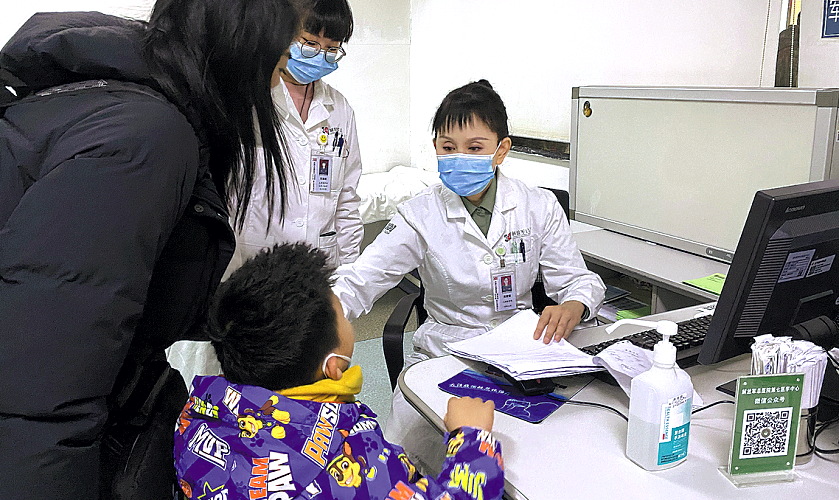
ADVERTISEMENT
ADVERTISEMENT






